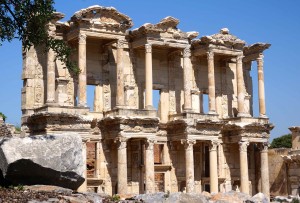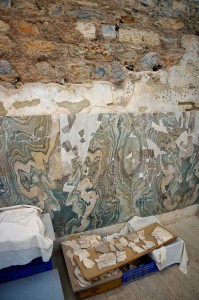- Getting ready to hit the road!
- Some thoughts on Hong Kong…
- A day in Danang and Hue, Vietnam
- Saigon River and Saigon, Vietnam
- Siem Reap and Temples, Cambodia
- The Floating Village — Kompong Phluk, Cambodia
- Phnom Penh and the road to Sihanoukville, Cambodia
- Bangkok, Thailand
- Day 2 in Bangkok — Ayutthaya, Thailand
- Singapore
- Langkawi Island, Malaysia
- Phuket, Thailand — or sort of…
- New Delhi, India
- Agra and the Taj Mahal
- The road to — and Jaipur, India
- India — a few closing thoughts.
- Dubai, United Arab Emirates
- Oman (The Sultanate of)
- Luxor, Karnak, and the Valley of the Kings, Egypt
- Petra, Jordan
- Sharm el Sheik and St. Catherine’s Monastery, Egypt
- Cairo and Giza, Egypt
- Egypt — Some final thoughts…
- Zooming around Israel
- Bodrum, Kusadasi, and Ephesus, Turkey
- Corfu, Greece
- Dubrovnik and Zadar, Croatia
- Venice, Italy — the last hurrah!
Leaving Israel, we were off for southern Turkey, making two port calls in Bodrum and Kusadasi, along the southwestern coast of Turkey in the Aegean Sea. I have to tell you that Turkey turned out to be one of our favorite places on the trip (I will talk about our after-cruise stay in Istanbul in a later post). Importantly, while Turkey is predominantly a Muslim country, it takes its secular stance and democratic, representative government very seriously. This was hard fought for through their war of independence, ending over 600 years of Ottoman rule through the Sultanate and establishing a new republic in 1923. Mustafa Kemal was a young Lieutenant who played an instrumental role in the war for independence and ultimately became the first President of Turkey where he instituted many radical reforms. So loved was Kemal, that the Turkish Parliament bestowed an honorific name for him – Attaturk, that means “Father of the Turks.” Even today you see pictures of Attaturk and Turkish flags everywhere. They take their freedoms very seriously. While initially pretty insular and controlling, the government has continued to make significant reform, resulting in a strong economy and a rapid growth in tourism. In fact, Turkey is the world’s sixth most popular tourist destination – ahead of places like the UK and Germany. It’s natural beauty, combined with a temperate climate, an amazing history (and historical record), and affordability have brought lots of visitors and foreign investment.
Bodrum today is representative of the new Turkey. It is compared to the Mediterranean cities of France, but is much more affordable. It blends an amazing amount of history (and associated structures), with resorts, marinas, and beachfront restaurants and clubs. The town sits on site of the ancient city of Halikarnassus, that boasted the burial site of King Mausolos (which resulted in the coining of the term “mausoleum”) that was one of the Seven Wonders of the Ancient World. Unfortunately, it was destroyed in an earthquake and many of the statues, etc. were taken to the British Museum. Other parts of Halikarnassus are still around, including the city gates and the amphitheatre. The other historical site is the Bodrum Castle that sits strategically on a promontory overlooking the harbor. This fort was built the Knights Hospitaller in 1402 to protect against the invading Turks, as well as serving as a Christian stronghold in Asia Minor, providing support to the Crusades. While some military relics still exist in the castle, much of it has been turned into the Museum of Underwater Archeology, which houses shipwrecks and their amazing cargoes of amphora’s, glass, jewelry, etc. The marina area is the home of a fleet of gulets – two- or three-masted wooden sailing vessels that take 8-12 people on “Blue Cruises” along Turkey’s southwestern coast. We have already decided that we are going to come back to do one of those trips. The marina area also has a number of seaside restaurants and shops catering to the tourists. We enjoyed a wonderful dinner at one of these restaurants, before heading to our next port in Turkey – Kusadasi.
Kusadasi is another very old city (founded around 3000 BC) along the coast of the Aegean Sea that has been a center of culture throughout its history. Consequently, you can see evidence (ruins) of all the civilizations (conquerors) that lived there. Like Bodrum, Kusadasi also had one of the Seven Wonders of the Ancient World – the Temple of Artemis – and also like Bodrum, there is very little left of it (one remaining column and some other piece parts). The real draw to this area is the ancient city of Ephesus – one of the twelve cities of the Ionian League during the Greek period, and one of the largest cities in the Mediterranean world (around 500,000 residents) during the Roman period. Ephesus also played a significant role in early Christianity. This is where Paul wrote a number of his famous letters and organized his missionary mission. This is also believed to be where John wrote a number of his Gospels. Mary may also have spent her final days here (more later), although there is some controversy as to whether she was here or in Jerusalem.
The amazing thing about Ephesus is its wonderful state of preservation. When you walk down the main streets, you can easily imagine what life was like there during the different periods. One of the shocking things was that Ephesus used to be on the harbor. Through years of silting from the Cayster River, the city lost its access to the Aegean (today it is 6 miles from the sea!) and that fact, together with a few earthquakes and sackings from marauding conquerors led to Ephesus’ decline. Archeological excavation really only started in the mid-1800s and it continues today. Most recently, the terrace houses (where the rich folks lived) have been worked on and both the beauty of the decoration (e.g., paintings, floor mosaics) and the sophistication of the design (e.g., sewage, hot water radiant heating) are really coming into view. Pretty amazing!
We also visited the Church of Mary, which is a few miles away from Ephesus. As I noted, there is some belief that Mary may have lived her last days here and, at least in the Catholic Church, this belief still holds. The Third Ecumenical Council in 431 was held there and at least two recent Popes have made pilgrimages. Many pilgrims still go there, looking for intercession by Mary for their needs. There is a wall where you can write your request and then stick it to the wall. When we visited, the wall was plastered with these requests.
Anyway, Turkey was great. I will do another post about our post-cruise visit to Istanbul later but for now, onto Croatia!
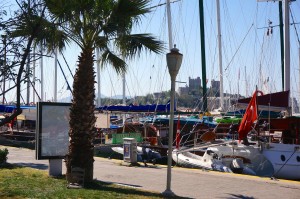
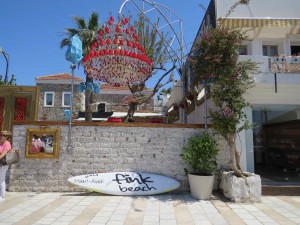
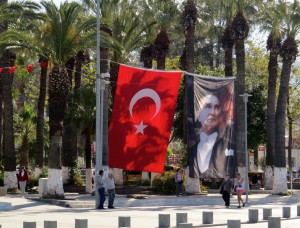
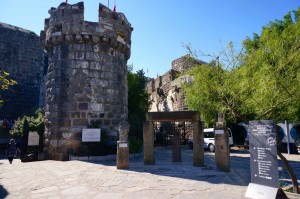
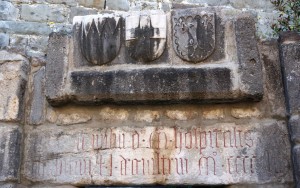
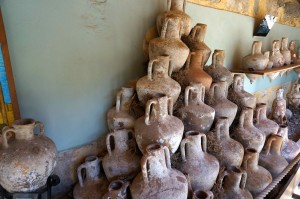
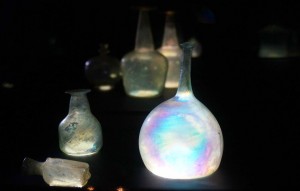
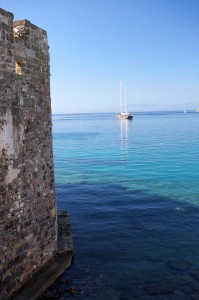
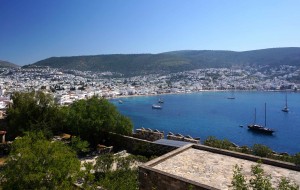
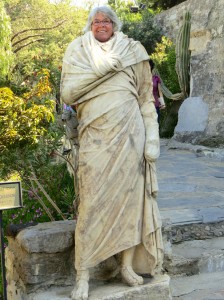
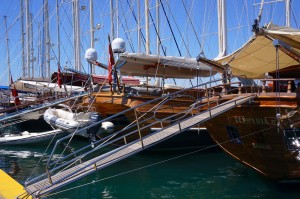
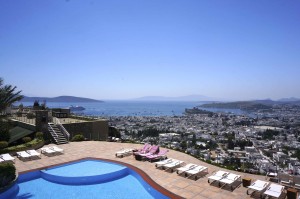
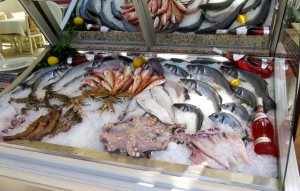 Our choice of restaurant for the evening. Can you see why?
Our choice of restaurant for the evening. Can you see why?
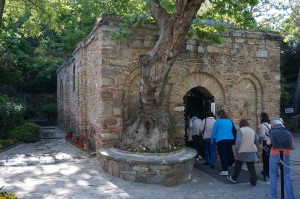
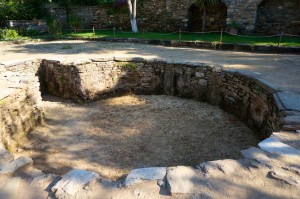
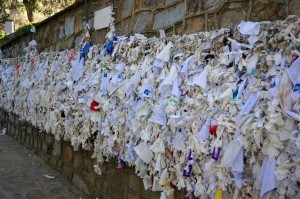
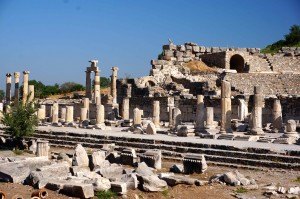
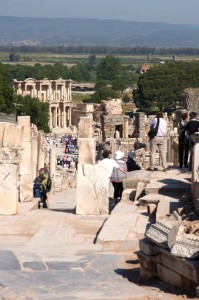
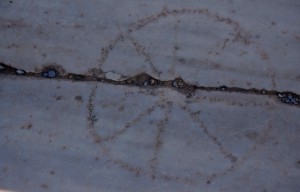
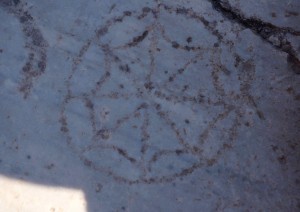
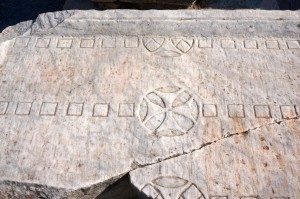
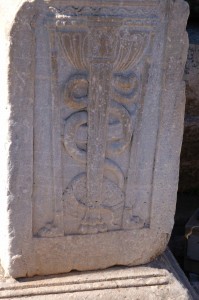
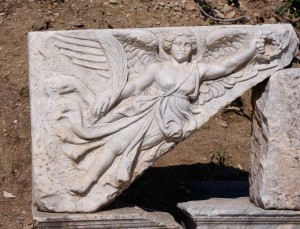
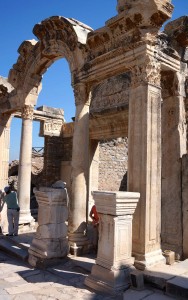
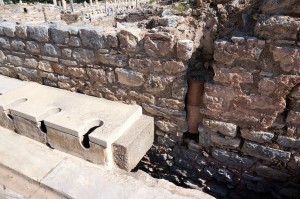 The public men’s room. You can see the water supply pipe in the wall and the trench in front had running water to “clean yourself.” There were no partitions, because this is where men would gather to talk politics. This is why there wasn’t a public ladies’ room — they weren’t allowed to talk politics!
The public men’s room. You can see the water supply pipe in the wall and the trench in front had running water to “clean yourself.” There were no partitions, because this is where men would gather to talk politics. This is why there wasn’t a public ladies’ room — they weren’t allowed to talk politics!
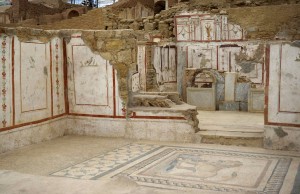
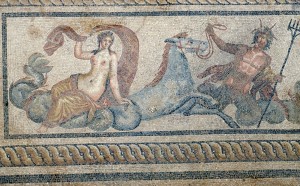
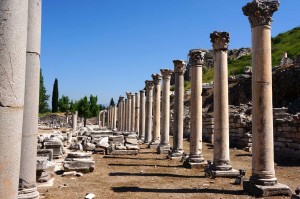
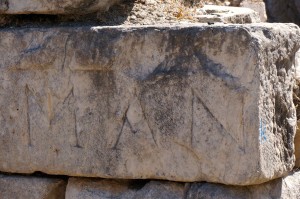
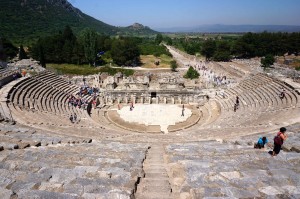
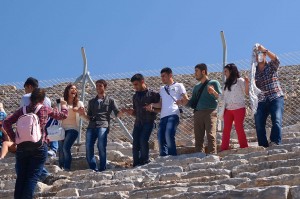
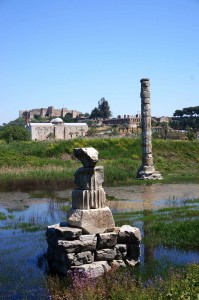
This entry was posted in Cruising, Travel, Turkey
